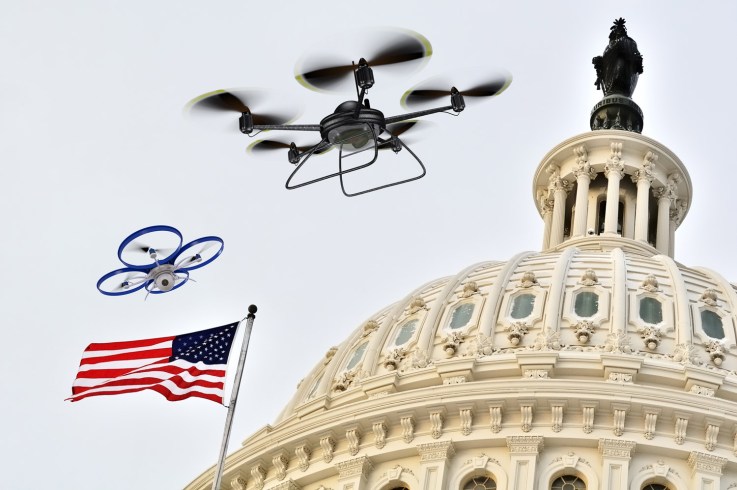
The FAA released some staggering numbers as it welcomed Part 107, otherwise known as the rules governing — or perhaps creating — the commercial drone industry in the U.S.: Within one year, the FAA estimates that 600,000 drones will be active in commerce in the United States.
Even if you assume every pilot has, on average, 1.2 drones, that’s still half a million commercial drone pilots. But where are all these pilots coming from, and what are they going to do with those drones?
Up until now, the process of becoming a commercial drone pilot was onerous. First, you had to be (or hire) a licensed manned aviation pilot, then have a lawyer to file paperwork related to exactly how you were going to operate your drone, often waiting up to six months before you received your certificate.
Today, the process takes 10 days. The first step is a $150 test you can take at any of 600 FAA-approved test centers (unless you are one of the few to have a manned pilot certificate, in which case the test is replaced with online training). It may be cheap, but this test is by no means easy, including questions on aeronautical charts, aviation law and the effects of weather conditions on flight. The final step is a TSA vetting, similar to applying for TSA Precheck.
The FAA also has set some general rules of the road — you must fly in daylight, away from airports and with your drone in your line of sight. Yet even these rules can be waived, and there have already been 76 waivers granted (at the time of writing this). So if you can dream it, you can probably do it under Part 107.
The winners will be the best entrepreneurs — the ones who find innovative ways to scale and delight their clients.
That brings us back to the bigger question: Where will these half a million new pilots come from and what exactly what will they be doing?
Maybe existing pilots will transition to drones. There are currently 171,000 FAA-licensed private pilots in the U.S. Even assuming that every one of them caught the drone bug and decided to quit their day job (which we all know is unlikely), that would still leave 329,000 who are expected to register as commercial users this year. Because only about 6,000 people are currently registered as commercial drone pilots, that means there will be more than 300,000 new commercial users directly resulting from the new regulation. That’s more than the population of Orlando.
The natural first question is whether these new pilots will be part of larger organizations, small business owners or individuals. Because the FAA estimates that 90 percent of commercial drones will have an average price under $2,500, think Phantom or Inspire drones. And when the tools of your trade are cheap enough for most Americans to afford on their own, there is little incentive to become part of a larger organization. So this leaves about 290,000 sole proprietors and small businesses on pace to register this year. This represents a whopping 52X growth in drone pilots year over year. But where will all these new users come from and what will these drones be used to do?
Typically they started out as consumers — receiving a drone as a gift, or having saved up for one as a special purchase — and fell in love with flying. They got so good at it that people started asking them to do favors; take a video of a house, do a roof inspection, snap some aerial family photos or perhaps survey a construction site. All it takes is a website and business cards and voilà — they had a sideline drone enterprise.
And how do they find clients? They hustle. They are always looking for new ways to add value to their clients through aviation. Part 107 will now put these enthusiasts on equal footing with the manned pilots currently working the skies. By the time this is all over, the number of commercial drone pilots will easily eclipse the entire manned pilot population in the United States — the only question is: how many times over?
These drone lovers are now triggering a wave of commercial drone applications as early adopters of a trend that is soon to become a mainstream occupation. The new rules provide structure for commercial users to operate legally and, in doing so, have leveled the playing field.
The winners will be the best entrepreneurs — the ones who find innovative ways to scale and delight their clients. Even the equipment is now readily available, thanks to a robust market for commercial-grade drones at consumer-friendly prices. When people can make back their investment on something they want by doing what they love, great things will happen.
I’ve been browsing online more than three hours today, yet I
never found any interesting article like yours. It’s pretty worth enough for me.
In my opinion, if all webmasters and bloggers made good content
as you did, the internet will be a lot more useful than ever before.